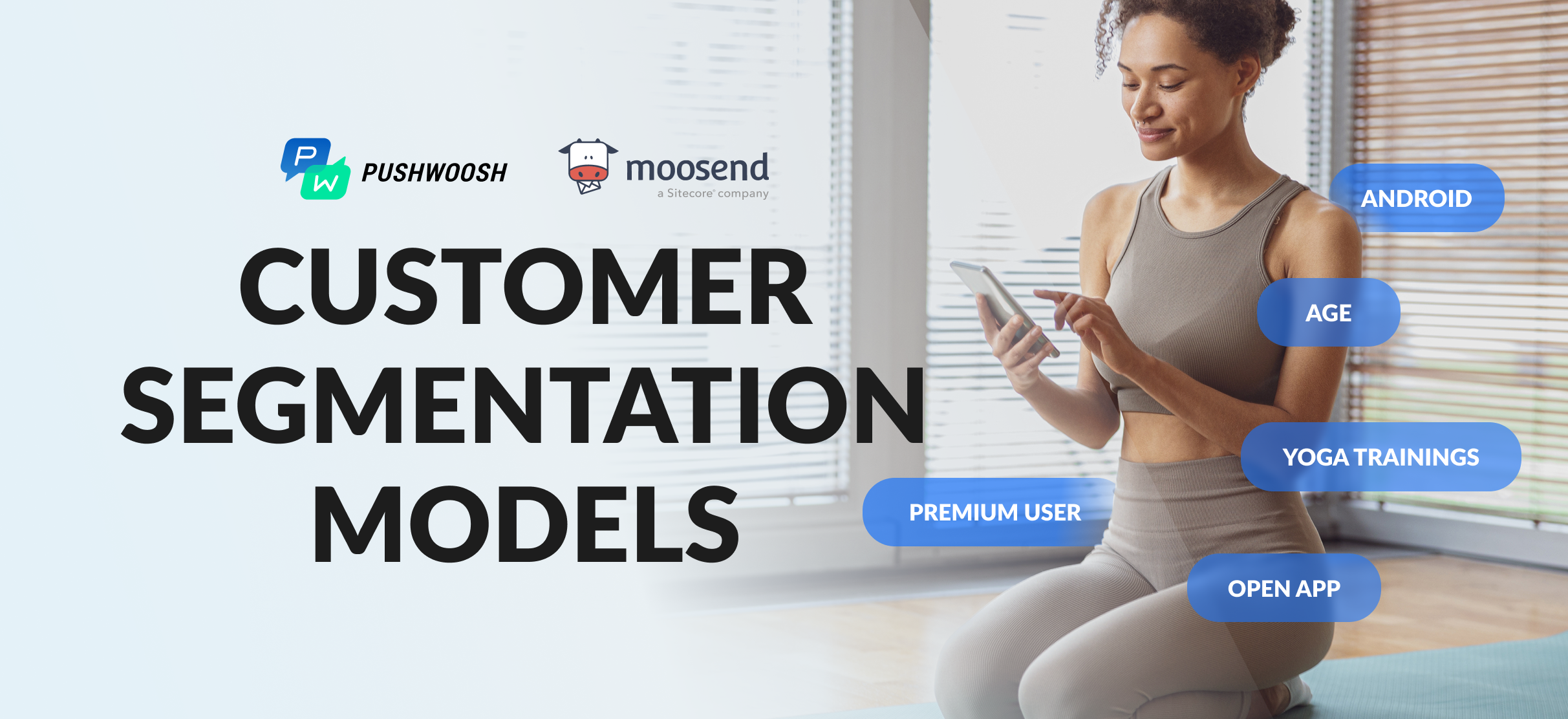The first prerequisite for creating an effective marketing campaign is to deliver it to the right people at the right moment with targeted messages. In other words, invest in content personalization. However, creating unique content for every prospective and existing customer is challenging since their needs and preferences are also unique.
That’s where customer segmentation comes in to help businesses contact their users with personalized marketing campaigns. The problem is there’s no one-size-fits-all approach when it comes to segmenting your audience. You need to find the segmentation model that fits your business needs. This guide will detail the most effective customer segmentation methods and give you tips on leveraging them to personalize your messaging and boost customer engagement.
How can customer segmentation models help your business?
Customer segmentation is about accessing valuable customer insight and tailoring your campaigns accordingly instead of simply dividing people into groups. But in case you’re still wondering why you need to invest in audience segmentation, here are the main reasons to do so:
1. Improved customer engagement
Customer segmentation models help you better understand your customers’ interests. Applying them to your marketing efforts allows you to find effective ways to engage your users. When you send relevant communications to your audience, you enhance their experience, leading to more sales. With the help of segmentation, you can set priorities for your communications and focus each message on the prospects that will benefit the most from it.
2. Increased ROI from paid campaigns
If we could pick one marketing channel where segmenting customer groups works wonders, that would be paid advertising. It is in your best interest to direct your paid ads to the prospects most likely to find them relevant.
The main benefit of customer segmentation for your paid advertising is that you can put more effort into segments that bring a high return on your investment while slowing down on reaching out to less profitable groups.
For instance, if an e-commerce company wants to promote its new sunglasses collection, it’d better focus on segments based in countries where the weather is generally sunnier or during summer months.
3. Higher email open and click-through rates
Understanding your recipients’ needs and preferences is the first step to performing effective segmentation.
With the help of email marketing platforms like Moosend, Omnisend, or other robust Mailchimp alternatives, you can create detailed list segments based on specific audience data and deliver personalized email marketing campaigns.
As a result, crucial metrics like your open, click-through, and conversion rates, plus email ROI will grow quickly yet impressively.
Enhanced customer loyalty
If you’ve been in the business world long enough, you already know that retaining existing customers costs less than acquiring new ones. If you understand what a specific customer segment needs and deliver meaningful and customized messages, you can gain their trust and turn them into loyal customers. Therefore, customer segmentation helps you maximize customer retention and improve customer relationships.
5 Customer segmentation models with high potential for personalization
So, you are ready to get started with customer segmentation. But where do you begin? Your approach will vary depending on your industry, goals, and customer journey.
Sociodemographic segmentation
The demographic segmentation model is probably the most popular among marketers. That’s why it’s one of the first stages in any company’s customer segmentation strategy. This type of segmentation groups people based on specific demographic characteristics, such as:
- Age
- Gender
- Education
- Job role
- Income
- Marital status
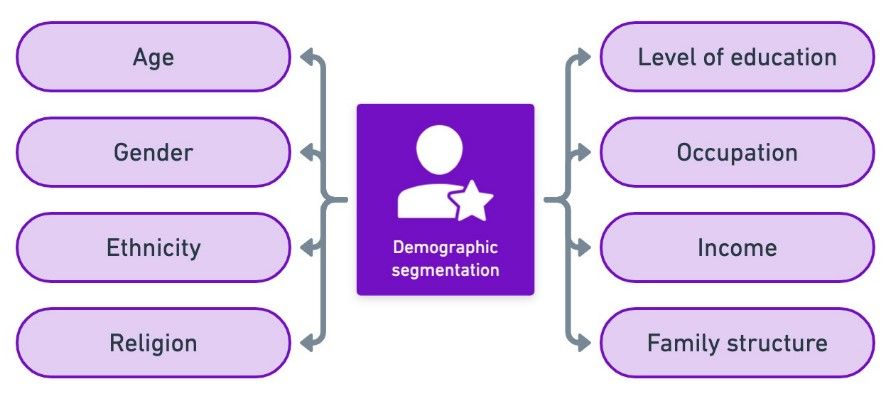
Demographic segmentation is highly effective for brands communicating with quite a broad audience in different industries, from e-commerce businesses to media and fitness apps. But let’s see a successful example from the Adidas Training app using the user’s gender as a segmentation rule. After the user specified their gender in the app settings, the famous brand targeted them with an upgrade offer. To increase user engagement, they showed photos of female athletes training so the offer feels more relevant to this specific audience group and results in higher response rates.

Or let’s say you’re a B2B app looking to promote its newest feature. Then, it would make sense to research your recipient’s role within their company to tailor your message to their specific professional challenges.
Geographic segmentation
Geographic segmentation is considered one of the pillars of personalized content marketing, separating clients by geolocation, like their country or city. This consumer segmentation model is ideal if you run your business worldwide or in two or more different locations.
If you acquire zero-party data on your website or app, you can use the city or country the user indicated upon registration to target them with customized offers based on their location. Alternatively, you could access such data through an email survey or social media polls and quizzes.
Or you could apply geographic segmentation using the first-party data you collected using your own tracking system, whether from your website or email campaigns – as long as users have given you explicit permission to do so, that is.
Pushwoosh allows you to target users with geo-based push notifications through its powerful Geozones feature. All you need to do is specify the target zone of your choice and set a trigger for users to receive messages as soon as they enter the location.
Knowing where your customers are based can tailor your communication to serve them better. How can you do that? Anything goes, from using the local slang and sharing news related to their geographic area to celebrating local traditions.
These customized messages show them you’ve put thought into your marketing campaigns and are ready to provide them with location-specific promotions. Also, geographic segmentation lets you send the correct email or SMS message at a specific time, considering the time zone your customers belong to. Not to mention, it’s easier to bring them to your brick-and-mortar store if you own one. And the best part is you can easily access such information from your sign-up forms or sales data.
Behavioral segmentation
While demographics and geographic information are a good starting point for customer segmentation, they will only get you so far. More often than not, targeting users according to their behavior — specifically, the behavior derived from their interactions with your brand and real-time triggered events — is the way to win them over. Some examples include their browsing or purchasing history on your website or their email engagement.
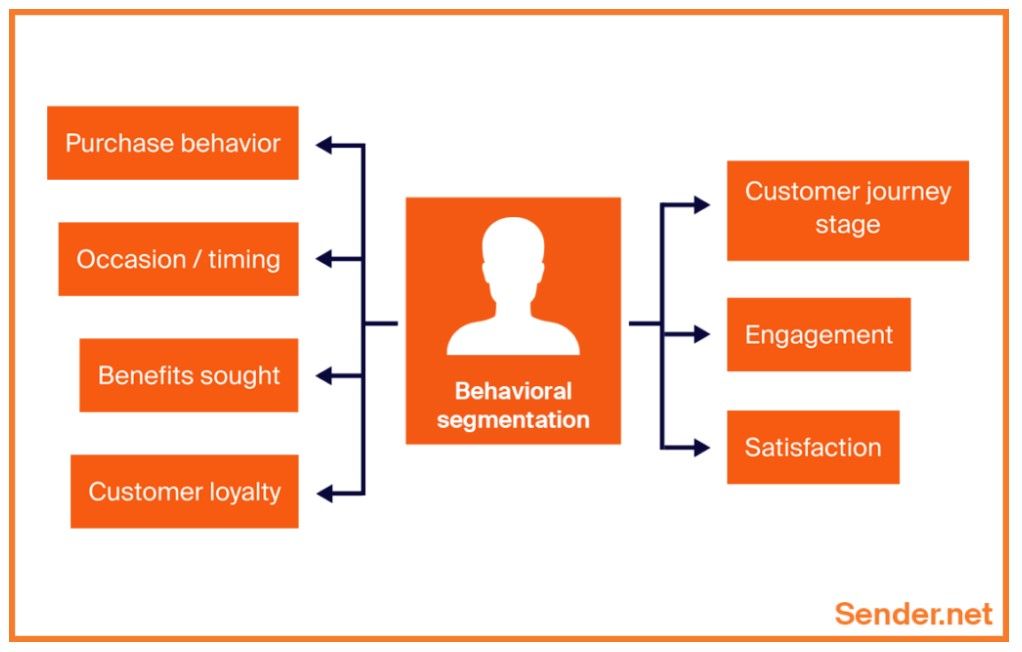
For example, it’s only natural that you’ll use different marketing strategies for your customer loyalty program members compared to individuals who have interacted with a couple of your social media posts. With behavioral segmentation, you can figure out ways to reach out to every customer, even re-engaging past customers or converting non-buyers.
However, a less obvious benefit of behavioral segmentation is that it helps your customer support team identify common issues and expand your knowledge database. For instance, you could discover a pattern among abandoning visitors due to the complexity of your checkout process. Based on this insight, you could resolve relevant pain points through a detailed knowledge base or by optimizing your checkout process.
RFM segmentation
RFM segmentation is one of the most powerful models for dividing your audience into groups based on their Recency, Frequency, and Monetary value. This model is popular for client segmentation because it uses numerical data that, by its nature, is concise and objective. Moreover, the insight gained from RFM metrics is easier to interpret. Not to mention that key customer behavior indicators are directly linked to lifetime value and engagement.
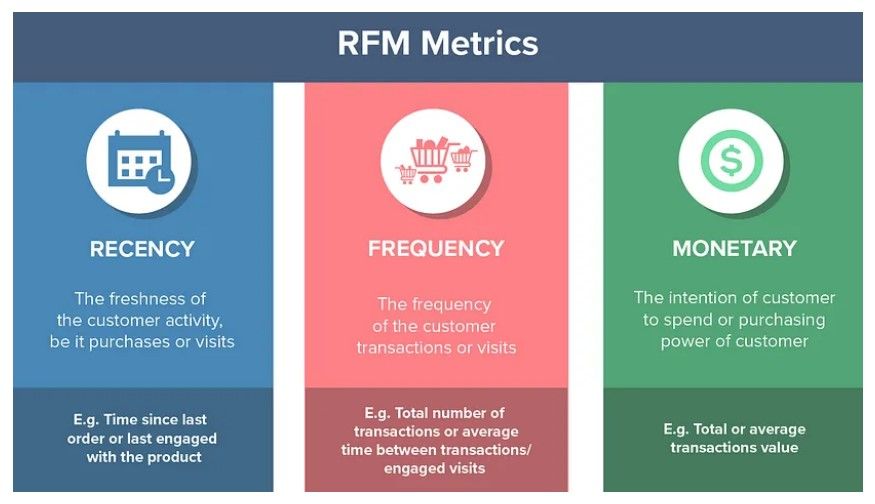
RFM segmentation allows you to answer key questions, such as which customers are more likely to churn or which ones are most likely to purchase again. More specifically, customers with recent interactions may be more responsive to communications and promotions. People who return to your brand frequently are more engaged, which might result in more loyalty. Lastly, a customer’s monetary value helps brands identify specific segments, such as the big spenders compared to low-value buyers. So, when you consider your customers’ particular behavior, you can deliver more relevant content and generate increased response rates.

Best content personalization practices for reaching your customer segments
Regardless of how you decide to segment your audience, you should also dive into and follow the best content personalization practices.
1. Let zero-party data guide you
There’s an ongoing conversation about the consumers’ need for more privacy online. In tomorrow’s cookieless world, brands will have to make the most of zero-party data, meaning the information that prospects provide willingly. There are various ways to gather such data, from your website’s or app’s lead capture forms to dedicated surveys or polls. Also, you could facilitate the process of users providing feedback after using your product or service.
This type of input will give you the opportunity to deliver personalized user experiences based on data they wanted you to know instead of creeping them out with third-party data they didn’t choose to give.
For instance, you should prioritize your audience groups based on their potential impact. So, to target high-value segments, consider developing a reward program that unlocks exclusive discounts when they reach a specific purchase threshold. This doesn’t mean you should neglect your low-value purchasers, though. Instead, you could target them with personalized product recommendations, special incentives, or up-sell opportunities. Alternatively, you could reduce the resources spent on this segment by automating the customer service they receive.
2. Nail your onboarding process
As with everything in life and marketing, first impressions matter. So, you’ll want to catch your users’ attention and create memorable experiences from day one. First, you can ask for feedback or get them to participate in surveys to gain valuable insights into their unique preferences and expectations. Based on this information, customize their onboarding through personalized journeys that meet their needs.
Streaming services like Netflix invest in user onboarding immediately after users register to the platform. They are asked to fill in three of their favorite shows so the service can later provide them with personalized recommendations on what to watch next. Trust us when we say that it doesn’t get any simpler yet effective than that.
If you care to take personalized onboarding one step further, consider turning your welcome email into a personalized video. It’s not as challenging as it sounds since you can use the same script and just make some tweaks based on the preferences and demographics your user filled in during the signup process. We should note, though, that leveraging a welcome video might not be an ideal fit for small businesses due to time constraints and limited resources.
3. Invest in personalized blog content
What’s the main purpose of building a well-researched blog? That would be to answer your audience’s key questions. But with the wide selection of blog content showing up on search engines, you have to personalize your blog posts to give users content that addresses their individual pain points.
When you customize your blog post suggestions, you show readers that you care to provide solutions to their daily challenges. As a result, you increase the chances of them putting their trust in your blog and coming back for more valuable content - and boost your website traffic while you’re at it.
Try to personalize the blog posts you show to users according to specific segmentation criteria like their demographics or reading history. For example, if a beauty brand wants to target male visitors interested in personal care content, you can recommend relevant blog posts, such as men´s grooming guides.
4. Leverage dynamic content in your emails and mobile messaging
With dynamic content blocks in your emails, your email content changes based on the recipient’s data. Incorporating dynamic content helps marketers save time from crafting personalized email campaigns for each segment. So, you create one email, incorporate dynamic content, and customize it to fit each segment’s needs. This process makes your readers feel your brand is closer to them and cares to address their unique pain points.
Not only that, but when you personalize your recipients’ experience through the use of automation, you free up time for your marketing team to focus on more essential tasks. For instance, you could leverage dynamic visuals to push segments in different regions worldwide to relate to your email design. Another powerful way to use dynamic content is aligning your email CTA copy with the group’s stage within your sales funnel.
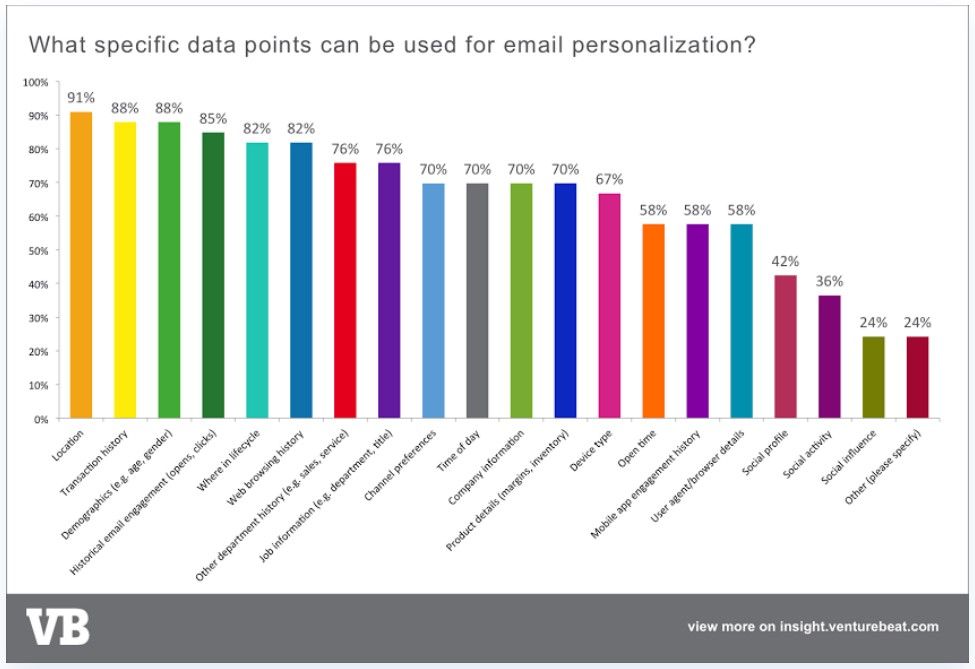
Similarly, you can use dynamic content in push notifications and in-app messages you send as a mobile app.
5. Monitor and measure your efforts
All savvy marketers will tell you there’s no use in segmenting your audience and customizing your promotions if you don’t measure how your personalized messaging is performing.
In case you don’t, tracking whether your efforts bring the desired results will be difficult. By monitoring the performance of your personalized content marketing, you can later make data-driven decisions on how to optimize customer experience.
There are a number of key performance indicators you could monitor, such as customer engagement, conversions, churn rates, etc. It’s up to you to determine which makes a significant impact based on your specific business objectives.
In addition to that, make sure to review your metrics constantly as your customers’ needs evolve and as your business and customer database grows. That’s how you’ll always know where to focus your optimization efforts.
Final words
Customer segmentation and content personalization are every business’s trusted allies in creating tailored experiences for all its users. Choosing the most suitable customer segmentation model brings you closer to customizing your marketing communications more granularly.
When you group your customers based on certain criteria, you provide them with the personalized experience they deserve. As a result, they’re more likely to respond to your campaigns and perhaps keep returning for more.
Hopefully, this guide has given you an idea of where each customer segmentation method works best and helped you pick the one that works best for your marketing goals. Far from that, it will serve as a starting point on how to personalize your content effectively and drive the best results in terms of customer engagement.
